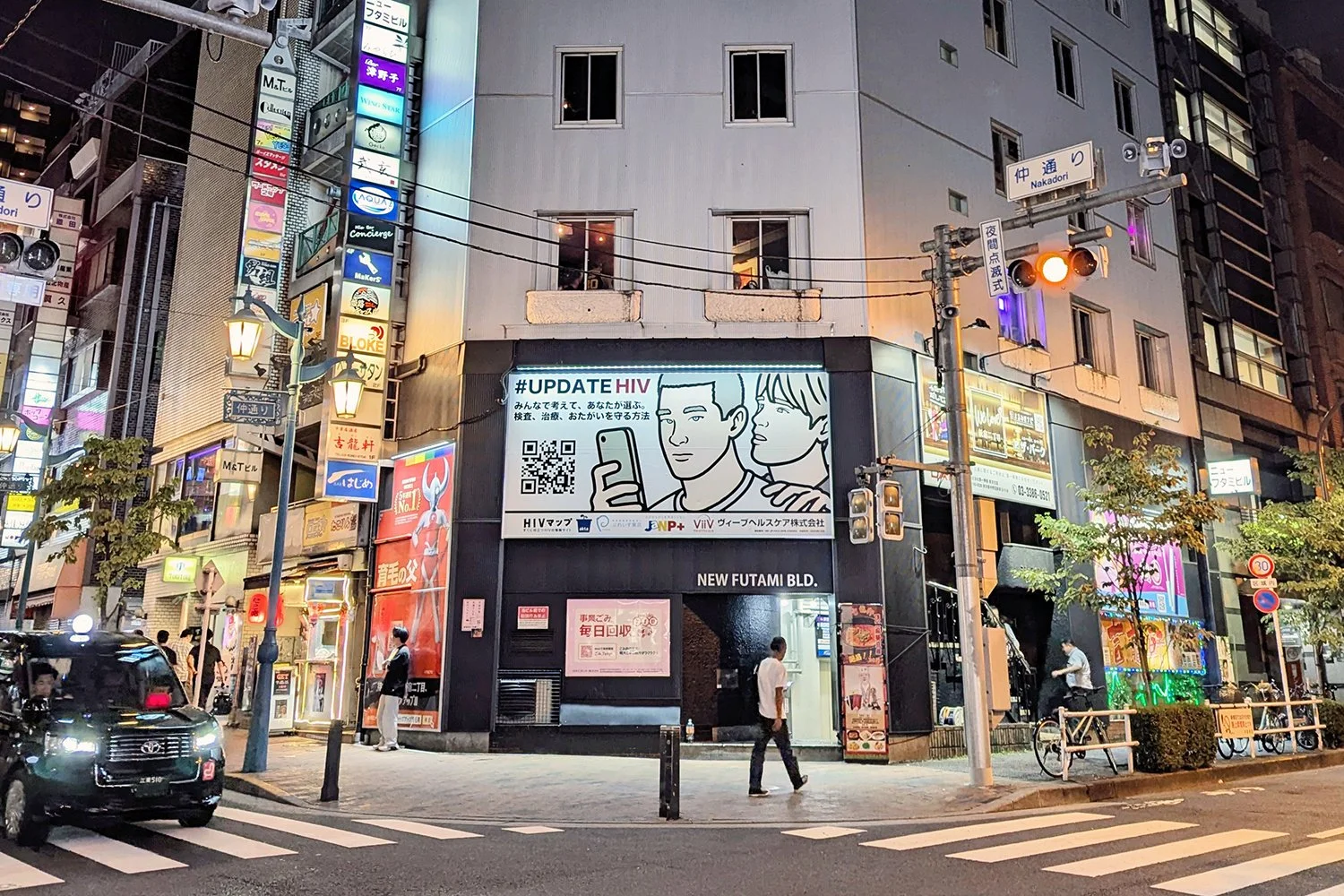Painter Yuta Niwa Remembers COVID-19

Niwa combines past and present in his pandemic series.
Cover photo: Yuta Niwa poses in front of his painting Diagram of the Coronamazu Battle (虎狼鯰決戦図) at Tsutaya in the Kyoto Takashimaya Shopping Center, Kyoto, Japan (2023). Photo by Danny With Love.
Intro
Local painter Yuta Niwa (丹羽 優太) was among the first artists exhibited at the new Tsutaya (ツタヤ) in Kyoto’s Takashimaya department store, which opened October 17th. This location boasts the bookstore chain’s largest art space yet!
I was immediately drawn to Niwa’s series Spread of the Chimaera Pandemic (キメラ流行記), an exploration of COVID-19 through a historic lens, inspired by Edo Period depictions of Cholera.
Niwa presents the virus in the form of a chimaera (animal hybrid) called Coronamazu (虎狼鯰). Deities and common people fight the monster together with familiar objects like face masks, thermometers, and hand sanitizer.
Despite a high urban density and a large elderly population, Japan’s pandemic death rate was among the lowest in the world, attributed to an early response and cooperative public.
Globally, pandemic art has focused on the mundane realities of individuals, like social distancing and isolation. Instead, Niwa elevates the fight to a coordinated battle of mythic proportions. He kindly agreed to answer my written questions. Please read on for my exclusive interview.
Danny: Why did you choose to make this series? How did COVID-19 affect you?
Niwa: There were no exhibitions, so it was time to stay at home by myself. This was born out of a need to do something. I think it’s time to take an objective view of the COVID-19 pandemic, so I wanted to show all the works now.
What is your background? How did you develop your style?
I have been working in Kyoto since graduating from Kyoto University of the Arts with a degree in Nihonga (Japanese painting). Currently, I am working as a fusuma (door panel) painter at Komyo-in, a sub-temple of Tofuku-ji.
I don’t know if I have established my style, but I feel that there are few artists who employ Nihonga to depict the present day. I think this is one of my strengths.
Why did you choose to represent COVID-19 through the Edo Period?
By connecting COVID-19 with the past, we realize that this is a human experience which is by no means unique. After that, I think we can take an objective look.
What are you hoping to convey?
Like my other works, I want to use humor to overcome feelings of powerlessness, even if it’s difficult. This is something that has been done in Japan since ancient times.
Can you tell me more about Coronamazu (虎狼鯰)?
In the Edo Period, there was a yokai (monster) called Korori (虎狼狸), who was considered responsible for the Cholera virus. Taking inspiration from that, I changed the kanji character from tanuki (raccoon dog) [狸] to namazu (catfish) [鯰] for “corona.”
Who is the red man?
That’s Shoki (鍾馗), the god of warding off evil spirits. He is often displayed on tiles in Kyoto. Red is the color of warding off evil, and paintings featured red to ward off epidemics.
Do you think art is important to public health?
I don’t think it’s necessarily important. Through this exhibition, I am not trying to convey that the epidemic is bad or that we need to be more careful. I am just documenting this as a natural event.
Why do you think Japan fared better than other countries during the pandemic?
I think it was just a coincidence. Everyone tried different things against this threat, and it happened to work out.
Why is it important to remember difficult events like COVID?
We tend to forget about recurring events, even disasters. I believe that one of the roles of art is to preserve the moment.
Niwa’s Spread of the Chimaera Pandemic (キメラ流行記) was on view at Tsutaya in Kyoto Takashimaya from October 17th to November 2nd, 2023.
Special Thanks
My thanks to English teacher Takahiro Yamauchi (山内 貴大) for his invaluable translation assistance which made this article possible. The following is Niwa’s response in original Japanese.
なぜこのシリーズを選んだのですか?COVID-19はあなたにどのような影響を与えましたか?
展覧会も無く、家に籠り、自分と向き合う時間でした。それでも何かしなきゃという中で生まれたキャラクターです。
今回はコロナも一回りして客観視できるタイミングになったと思っています。そこでもう一度今までのこのシリーズを一度に見せようと思いました。
あなたの経歴は?どのようにして自分のスタイルを確立したのですか?
京都造形芸術大学で日本画を学び卒業後、京都で活動している。今は東福寺塔頭光明院で襖絵の仕事をしている。
スタイルを確立したかわからないが、日本絵画のスタイルを用いながら現代を描く作家は少ないように思う。この現代美術と日本絵画の間の仕事は自分にとっての一つの強みだと思う。
なぜ江戸時代を通してCOVID-19を表現することにしたのですか?
過去と繋ぐことでこれは普遍的な行為で、決して特別でないことに気づける。その後で自分たちを客観視できると思っています
何を伝えたいのですか?
他の作品にも共通することですが、これはおもいかテーマであってもユーモアのある表現でことでやり場のない思いを乗り切れたらという気持ちです。それは古来から日本で繰り返されてきたものです。
Coronamazuについて詳しく教えてください。なぜトラ、オオカミ、ナマズなのですか?
江戸時代、コレラウイルスの妖怪として、虎狼狸(ころり)という妖怪がいました。
そこから着想を得て、コロナの当て字で、狸からナマズに変更しました。
赤い男は誰ですか?神ですか?
鍾馗という厄除けの神様です。京都の瓦の上によく飾ってあります。赤い色は厄除けの色で、昔もよく疫病除けの絵は赤い絵の具で描かれていました。
公衆衛生にとって芸術は重要だと思いますか?
必ずしも必要ではないと思う。私も決して今回の展示で、疫病が悪いとか、もっと気をつけないとということを伝えたいわけではない。疫病という自然の摂理の一つを記録してるにすぎない。
パンデミック(世界的大流行)の際、日本が他の国よりもうまくいったのはなぜだと思いますか?
たまたまとしか言えないかと。皆がわからない脅威に対して色々試した結果、たまたまうまくいったかのうせいがある。
なぜCOVIDのような困難な出来事を記憶することが重要なのですか?
人間の普遍的な行動はやはり忘れてしまう。アートの役割の一つにその時代の空気感を伝えることだと思っている。
世の中に繰り返し起きる普遍的な事象(例えば、災害や疫病もそうです)は何度起きても、その大事なことは忘れてしまう。なので、何かの形に残すことというのは大事なことなのかなと思ってます。





